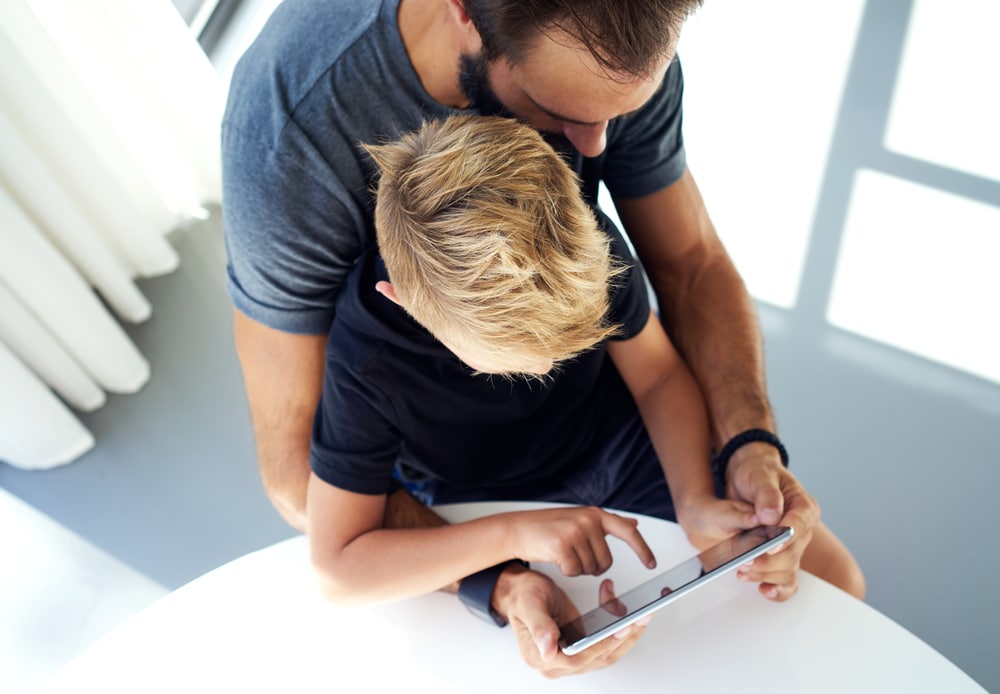Raising children during the Age of Technology has its fair share of challenges. Ensuring that your kids don’t spend too much time in front of an illuminated blue screen is just one of them.
If you’re an Android-friendly family, you already have a few key monitoring tools at your disposal. Keep reading to learn more about how you can manage your child’s screen time with parental controls for Android.
Signing up for parental controls is easy on any Android device. You simply need to create an account for the service from your phone or tablet’s browser, using your email address or select social media information. Follow the prompts to provide the correct personal information.
Once you’ve created your Screen Time account, you’ll need to connect your child’s device. You can easily complete this process by following these instructions:
- Visit screentime.link from the browser on your child’s phone.
- Download and open the Screen Time app from the Play Store.
- Click Get Started, and repeat the process you completed from your own device.
To ensure optimal functionality, make sure Screen Time has all necessary permissions to monitor the device and block or activate apps.
If you want to make changes to any of these commands, go into the app’s settings page. There, you can edit accessibility services, device pairing, active blocks, app activation, and the device administrator.
Oversee Content and Usage
There is a ton of information online, and a major portion of that is likely content that you don’t want your kids to see.
Not only can kids use their devices to access inappropriate content, but they could also be targeted by online predators and cybercriminals.
Even if your children only use age-appropriate apps and programs, they could still be at risk.
Parental controls give you the ability to screen what your kids are watching or reading beforehand.
You can also set more rigorous controls based on a variety of different criteria, including:
- URL blocking
- Keyword filters
- Time limits
- Geo-fencing
- App usage
Additionally, you can view incoming and outgoing messages to ensure that your children are safely and responsibly communicating with others online.
Set Time Caps
How your children access the internet is incredibly important, but so is the amount of time they spend online.
Too much screen time can impair a child’s ability to focus and make sound decisions. It can also impede their performance at school, as well as their behavioral patterns and mood.
Young children typically spend at least two hours each day in front of some type of screen, with nearly half of their time being spent on mobile devices.
Children who have smartphones spend even more time plugged in. On average, these kids spend 7.5 hours per day on their mobile phones.
When it comes to the habit-forming nature of mobile technology, the results are even more shocking. A staggering 50 percent of children admit to being addicted to their mobile devices.
You can greatly reduce this risk by using parental controls to monitor your child’s usage. You can set time limits, view activity, or block device use entirely just from the tap of your own screen.
This can help you to establish healthy routines, while also helping you to learn more about your kids’ online habits.

Monitor All Channels
If you use an Android-powered smartphone or tablet, you have access to other forms of media including TV, music, movies, and books.
Webpages are the primary risk for young mobile users, but they could also access inappropriate or unsafe content through these channels.
Android’s built-in parental controls allow you to control what TV or movie ratings your kids are allowed to watch. You can also set filters that prevent children from listening to explicit music.
To ensure that your kids’ devices are fully protected, take some time to see everything they have access to.
Set Clear Parameters
Establishing rules without explaining what they mean could defeat the purpose. A lack of transparency can make your children reluctant to adopt new habits.
Discuss screen time with your kids, what it means, and why it’s important to manage. This is a great opportunity to educate them about the internet, as well as what content is appropriate or restricted.
Even with parental controls in place, keeping an open dialogue is the key to strengthening your child’s judgement when it comes to how they use their Android devices.
Technology may be everywhere, but that doesn’t mean you can’t question why, when, or how your children use their mobile devices. Setting parental controls on your children’s Android phones or tablets will protect them while also helping them to develop good habits regarding screen time and online activity.


Join the conversation